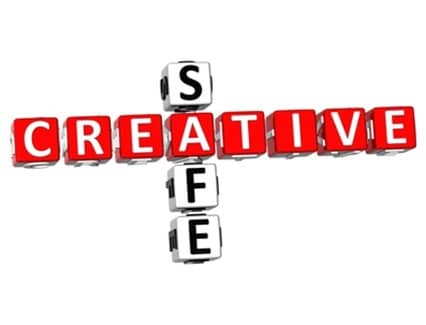Scenario Learning in Risk and Safety
 One of the best ways of learning safety is through scenarios. Scenarios are constructed to either replicate real situations to maximize perception of recognizable cues or, to enhance the imagination of possibilities. One of the greatest capabilities a safety person can have is a creative imagination. Most times when serious events occur people are surprised by what happened, they didn’t see it coming. One will never learn to “Manage the Unexpected’ (Weick) without a primary focus on imagination, learning and adaptability (resilience). This is why the most effective safety programs are not about learning legislation, regulation and static content but about learning risk indicators. In Human Dymensions we call these iCues™. The key to being risk intelligent is not in reciting the Act and Regulation but in recognizing cues, indicators and ‘red flags’. Ones IQ in safety is one’s iCue™ in safety.
One of the best ways of learning safety is through scenarios. Scenarios are constructed to either replicate real situations to maximize perception of recognizable cues or, to enhance the imagination of possibilities. One of the greatest capabilities a safety person can have is a creative imagination. Most times when serious events occur people are surprised by what happened, they didn’t see it coming. One will never learn to “Manage the Unexpected’ (Weick) without a primary focus on imagination, learning and adaptability (resilience). This is why the most effective safety programs are not about learning legislation, regulation and static content but about learning risk indicators. In Human Dymensions we call these iCues™. The key to being risk intelligent is not in reciting the Act and Regulation but in recognizing cues, indicators and ‘red flags’. Ones IQ in safety is one’s iCue™ in safety.
Scenarios are based on experiential learning principles and can work as hypotheticals or re-enactments. These can take the form of drills, adventure activities, desktop workshops or interactive games. Experiential learning is one of the most powerful modes of learning and priming the unconscious.
Scenario learning in safety is not about prediction. Prediction thinking is the futile mindset of ‘all accidents are preventable’ and zero. Scenario learning is about learning in resilience, adaptability, strategic flexibility, iCue development and managing strategic uncertainty. One of the primary skills we help develop in the post graduate program in Unit 4 High Reliability Organisations (HROs) is causal loop mapping (Weick). Weick uses causal loop mapping as a tool to teach by-product and trade-off thinking, an essential in managing the unexpected. All safety people should be proficient in thinking trajectories and by-products not backward thinking and counting. Whilst it is valuable to consider lessons learned from the past, how can those learning be applied to the future?
Of course excessive experiential drills can lead to desensitisation. A desensitized workforce hears the fire alarm and doesn’t move. Again, being imaginative in developing scenarios requires expertise in learning, instructional design and social psychology.
Ten tips for safety scenario learning?
1. Develop scenarios that are active and make participants think.
2. Develop scenarios that trigger thinking in possibilities, options, by-product and trade-off thinking.
3. Make sure the team developing the scenarios has a combination of experienced workers, instructional designers, educators and social psychological expertise.
4. Make sure that what you want to be learned is ‘experiential’ rather than just ‘cognitive’.
5. Develop a scenario that has elements of unpredictability and paradox.
6. Build choice into the scenario so that participants can change direction and outcomes.
7. Plan and then trial the scenario to iron out bugs.
8. Make sure the scenario runs in phases and ‘rounds’.
9. Ensure that debriefing is structured and supported by key conceptual foundations eg. a social psychological and cultural (not legal) understanding of due diligence would be helpful.
10. Construct scenarios that trigger emotions and feelings associated with frustration, confusion, choice, uncertainty, risk and trust.



Do you have any thoughts? Please share them below